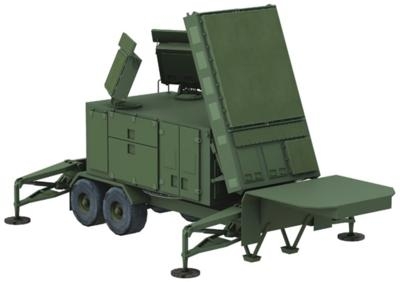Raytheon's Gallium Nitride-Based AESA Patriot Radar Completes Key Milestones
Raytheon Company recently completed a series of company-funded milestones to upgrade the combat-proven Patriot Air and Missile Defense System. The projected upgrade delivers 360-degree capability and keeps Patriot ahead of increasingly more sophisticated threats, such as aircraft, drones, and cruise and ballistic missiles.

Raytheon's Patriot is owned by 13 nations, has more than 200 combat engagements, 1,400 flight tests, and 3,000 ground tests.
The Patriot radar main array was enhanced with gallium nitride- (GaN) based, Active Electronically Scanned Array (AESA) technology. The same Raytheon engineers who completed those milestones are currently constructing a GaN-based AESA, full-size, main panel radar array. They are on track to have a full-scale main array prototype operational in early 2016 – just 24 months after the company started building it.
"Raytheon has invested more than $150 million in GaN technology and learned invaluable lessons while building our GaN-based AESA full-scale prototype," said Ralph Acaba, vice president of Integrated Air and Missile Defense at Raytheon's Integrated Defense Systems business. "This ensures Raytheon is able to rapidly develop, build, test and deliver a combat-ready GaN-based AESA radar that gives Patriot 360-degree capability."
In 2015, Raytheon built a GaN-based AESA rear-panel array and integrated it with a radar for potential use in Patriot, using existing and recently modernized back-end processing hardware and software. The radar then tracked targets of opportunity, leveraging a seamless 360-degree view.
"Raytheon's GaN-based AESA radar will outmatch future threats for the same reason today's Patriot is able to outmatch current threats – because it is designed to be upgraded and we have a growth path for the system," said Tim Glaeser, vice president of Integrated Air and Missile Defense Business Development at Raytheon's Integrated Defense Systems business.
The recently accomplished AESA GaN milestones include:
- Completing construction of the AESA main array structure.
- Constructing the AESA arrays' radar shelter.
- Integrating receivers and a radar digital processor into the radar shelter.
- Delivering the shelter to Raytheon's test facility in Pelham, N.H.
- Testing the radar's cooling sub-system.
Raytheon's GaN-based AESA radar will work with future open architecture (such as the Integrated Air and Missile Defense Battle Command System) and retains backwards compatibility with the current Patriot Engagement Control Station. It will also be fully interoperable with NATO.
The Raytheon-built GaN-based AESA radar uses three antenna arrays mounted on a mobile radar shelter to provide 360-degrees of radar coverage. The main AESA array is a bolt-on replacement for the current Patriot antenna. The GaN-based AESA array measures roughly 9' wide x 13' tall, and is oriented toward the primary threat. The new rear panel arrays are a quarter the size of the main array, and let the system look behind and to the sides of the main array to offer Patriot the ability to engage threats in all directions.
(Image provided with Raytheon news release. Artist's rendering of Raytheon's 360-degree capable Patriot radar array enhanced with gallium nitride- (GaN) based, Active Electronically Scanned Array (AESA) technology.)
 Unfortunate... ANN/SportPlane Resource Guide Adds To Cautionary Advisories
Unfortunate... ANN/SportPlane Resource Guide Adds To Cautionary Advisories ANN FAQ: Turn On Post Notifications
ANN FAQ: Turn On Post Notifications ANN's Daily Aero-Term (04.29.24): Visual Approach Slope Indicator (VASI)
ANN's Daily Aero-Term (04.29.24): Visual Approach Slope Indicator (VASI) ANN's Daily Aero-Term (04.28.24): Airport Marking Aids
ANN's Daily Aero-Term (04.28.24): Airport Marking Aids ANN's Daily Aero-Linx (04.28.24)
ANN's Daily Aero-Linx (04.28.24)



